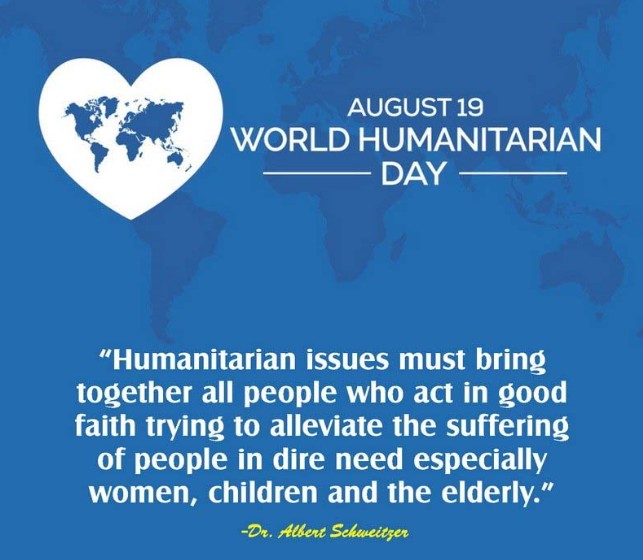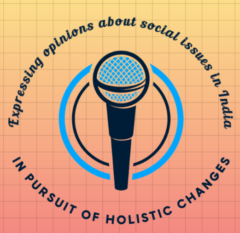
What does it truly mean to awaken a shared spirit among a population as diverse as India’s 1.4 billion people? Every year, World Humanitarian Day offers an opportunity for India to reflect on the resilience, compassion, and collective responsibility embedded in our society. This year’s theme, “Strengthening Global Solidarity and Empowering Local Communities,” extends a powerful challenge to all of us. Can we rise above divisions to unite in the service of humanity? On this day, it is important to explore India’s vast humanitarian journey and the deep responsibilities we carry.
Strengthening Global Solidarity and Empowering Local Communities
The theme of World Humanitarian Day 2025 is more than a motto; indeed, it is a call for profound action and partnership. It underscores that global solidarity must coexist with respect for the knowledge and leadership of local Indian communities. Our vast, diverse nation requires solutions deeply rooted in local contexts – rural villages, urban slums, tribal areas – that embody dignity, resilience, and lasting change. Therefore, this theme pushes India to redefine aid from a top-down approach to one of reciprocal empowerment and trust. Rabindranath Tagore captured this sentiment beautifully when he said, “You can’t cross the sea merely by standing and staring at the water”. Consequently, our duty is to act together with conviction and humility.
Furthermore, I firmly believe that empowering local communities means not only providing aid but nurturing them as equal partners. Solutions must be sustainable while honoring the unique cultural fabric of each community. Ultimately, India’s humanitarian story will only be complete when global aid and local wisdom walk hand in hand. Thereby, this dual focus should breathe life into the aid efforts and deepen their impact. As a result, we can empower communities, making them self-reliant and the efforts sustainable.
Historical Evolution: How Humanitarian Work Has Shaped India’s Spirit
India’s humanitarian journey is a tapestry woven with ancient traditions and modern responsibility. For centuries, the ideals of charity and selfless service inspired community welfare across regions. After independence and the trauma of partition, humanitarian work focussed on massive refugee rehabilitation and social welfare efforts. These early efforts laid the foundation for India’s growing consciousness about humanitarian needs.
Moreover, over time, India’s role shifted from aid recipient to a significant regional and global aid provider, reflecting a broader vision. Our commitment today embodies Mahatma Gandhi’s profound words: “The best way to find yourself is to lose yourself in the service of others”. This evolution is India awakening to a shared spirit of global responsibility, embracing its mission on the world stage more actively than ever before.
India’s Global Footprint: Major Humanitarian Contributions (2020–2025)
India’s humanitarian reach extends well beyond its borders, showing leadership and solidarity internationally. Between 2020 and 2025, India has delivered critical aid to countries as varied as Afghanistan, Bangladesh, Sri Lanka, and many African nations. The nature of this aid includes emergency food relief, medical supplies, and disaster response materials – demonstrating India’s humanitarian values on the global stage. Notably, India’s efforts emphasize a blend of compassion and strategic diplomacy.
India’s diplomatic and humanitarian efforts illustrate the unity Sardar Patel envisioned when he stated, “Unity and faith, and selfless devotion to duty, bring success”. The following table highlights some of India’s most significant contributions in recent years, illuminating how the nation invests in global care and compassion. This humanitarian endowment has enhanced India’s image as a responsible and caring global player.
India’s Major Humanitarian Contributions Abroad (2020–2025)

Source: Ministry of External Affairs, 2025
Empowering Local Communities: The Heart of India’s Crisis Response
Local community empowerment remains the foundation of India’s effective humanitarian response. From the Kerala floods of 2018 to the COVID-19 pandemic, the strongest and most sustainable recoveries have been led by trained local volunteers, women’s groups, and NGOs working closely with government agencies. Decentralized leadership ensures that aid is culturally sensitive, timely, and directed towards those whose lives are most affected. This approach not only accelerates recovery but also fosters trust and ownership.
Additionally, this model embodies the joy of service captured by Tagore who said, “Service is joy.” India’s shared spirit manifests most genuinely when locals are partners, not passive recipients. Empowering local communities is fundamental to building long-term resilience in the face of recurring crises. Indeed, such a strategy guarantees that aid, in whatever form, reaches the most marginalized effectively and sustainably. Incidentally, aid to the needy and marginalised can come in various forms related to human rights, health, social justiceetc.
The Current Humanitarian Landscape: Challenges and Realities
India’s humanitarian challenges today are both vast and urgent. In 2024, the Internal Displacement Monitoring Centre recorded 5.4 million internal displacements caused by hydro-meteorological disasters alone. These disasters claimed 2,936 lives, destroyed over 3,63,000 homes, and took the lives of more than 61,000 cattle – impacting millions in profound ways. Thus, the scale of such disasters paints a daunting picture of ongoing vulnerability.
Moreover, these statistics only hint at the human suffering and economic loss behind each number. The scale of these challenges demands immediate aid, sophisticated disaster preparedness, and sustainable recovery plans. As a result, this raises fundamental questions: How can India harness its shared spirit to meet such mounting challenges? What policy and community actions are needed to lessen human suffering effectively?
Humanitarian Challenges and Disaster Displacement in India (2024)

Source: Internal Displacement Monitoring Centre (IDMC), HAI, 2025
Indian Humanitarians: Stories of Courage and Sacrifice
Behind every crisis statistic lies countless stories of bravery and sacrifice from India’s humanitarian workers. From frontline doctors and rescue teams to local volunteers, these individuals work tirelessly, often risking their own safety, and many a time, their lives as well. Globally, aid workers faced increased attacks in 2024, a reminder of the dangers inherent in this mission. Their dedication adds the indispensable human face to humanitarian efforts.
Furthermore, their resilience and dedication embody Gandhi’s words: “You may never know what results come from your actions, but if you do nothing, there will be no result”. Stories of courage inspire us all, reflecting the power of India’s collective spirit in the face of adversity and hardship. Ultimately, they remind us that every act, no matter how small, matters in the larger context of a humanitarian mission, sometimes assuming humungous proportions.
Policy and Progress: World Humanitarian Day’s Impact on India
World Humanitarian Day serves as a poignant impetus for policy reflection and innovation in India. The observance highlights international humanitarian law principles while encouraging governments to update and enforce disaster relief frameworks. India increasingly aligns its humanitarian policies with global standards, focusing on protection of aid workers, inclusion of vulnerable groups, and coordinated disaster response. Consequently, this focus strengthens India’s disaster management capacity.
In addition, this annual reminder urges lawmakers and civil society to recommit to humanitarian values and reforms. Policy improvements continue to make disaster management more proactive and community centered. These advancements shape India’s leadership in the global humanitarian landscape, positioning it as a regional role model.
Youth and Technology: Catalysts of India’s Humanitarian Future
India’s youth, connected by digital tools, are redefining humanitarian action. From crowdfunding for medical emergencies to organizing real-time relief efforts, young people are leaders of innovation and advocacy. Tech platforms amplify marginalized voices and facilitate transparent and timely aid. This wave of tech-enabled youth activism energizes humanitarian work nationwide.
Moreover, this vibrant participation reflects Sardar Patel’s call for unity transcending caste and creed. The youth’s passion and creativity ensure humanitarian aid becomes more inclusive, effective, and far-reaching, shaping India’s humanitarian future with energy and vision. Indeed, the digital frontier promises a new era of collaborative humanitarianism.
How You Can Join the Movement on World Humanitarian Day
Wondering how you can awaken India’s shared spirit this World Humanitarian Day? Start by volunteering, donating, or raising awareness within your community. Remember the words of Mother Teresa: “If you can’t feed a hundred people, feed just one”. Indeed, individual contributions matter deeply. Even simple actions, when multiplied across millions, create an unstoppable force of change that can uplift lives and transform communities. Your participation, no matter how small, is a vital thread in the larger humanitarian fabric of India.
Furthermore, the collective power of individual contributions – small or large – creates ripples of change across the nation’s humanitarian landscape. This day serves as a call to each citizen to contribute, ensuring no one is left behind. Together, small footsteps create a wave of compassionate action that shapes India’s shared spirit. So ask yourself: What difference can I make today? When many answer that question, the cumulative impact shapes a more caring and resilient India. Any crisis that requires humanitarian aid calls for human solidarity in the face of adversity.
Towards a Future Rooted in Compassion and Justice
As World Humanitarian Day 2025 inspires India to awaken its shared spirit, transformative changes are essential. The future requires expanding financial aid for marginalized populations, strengthening disaster preparedness and response systems, and ensuring equitable access to healthcare and education. These changes underpin sustainable humanitarian progress.
Moreover, government policies must focus on inclusive, community-driven approaches and invest in technology for transparent aid distribution. National leadership, coupled with citizen commitment, will pave the way for a compassionate India, true to its legacy. Tagore aptly said, “Faith is the bird that feels the light when the dawn is still dark”. Therefore, let this faith guide India’s humanitarian journey forward.
World Humanitarian Day demands not just thought but action. Volunteer, donate, advocate, and educate to be part of India’s shared humanitarian spirit. The world is watching India’s journey – what role will you play in this unfolding story?
#WorldHumanitarianDay #HumanitarianAidIndia #EmpoweringCommunities #IndiaCares #DisasterReliefIndia

Charity begins at home.
Before giving aid to other countries (which is for our own strategic benefit) let us begin with our own people.
Let the haves in your locality, village, city or state first share with the have-nots.
Try to lift our population above poverty line.
Multidimensional poverty index in our country is pathetic
MPI, a globally recognized measure that assesses poverty beyond just income, considering various deprivations in health, education, and living standards. It provides a comprehensive picture of poverty, allowing for comparisons between countries and within them, and helping to identify vulnerable groups.
in 2021, India was ranked 66th out of 109 countries, according to global MPI reports.